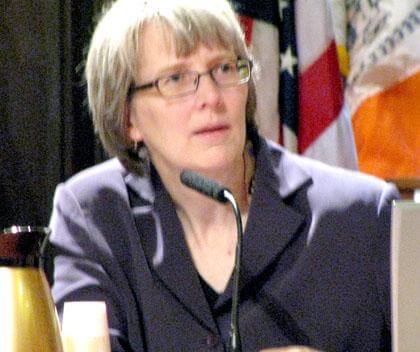By Philip Newman
MTA officials have reported considerable progress in projects to prevent a repeat of the August 2007 flood that shut down or disrupted much of the city’s subway system. But they said the remainder of the work, estimated to cost $80 million, has been delayed for lack of money.
Metropolitan Transportation Authority officials testified at a public hearing last Thursday, called by City Councilman John Liu (D−Flushing), chairman of the Council Transportation Committee on their efforts to combat the flooding problem.
“We’re pleased that the MTA appears to be making significant progress with its initiatives to mitigate storm flooding in the subways,” Liu said.
“It is with some dismay that we learn an additional $80 million is needed to complete the work and that it is now on hold,” he said.
The repairs and installation of pump replacements, overhauls and other work have been carried out to try to prevent what happened when a severe storm struck on Aug. 8, 2007. Three inches of rain fell in an hour, filling subway track beds and stations with water and severely curtailing service for hours.
In addition to crippled subway lines, such as the E train in Queens, city buses in the borough and LIRR service experienced massive delays.
Connie Crawford, MTA chief engineer, said the MTA’s drainage system was completely dependent on the city’s drainage system when the storm hit. She said many pumps and valves and other items are old and in need of replacement.
“We were not prepared to tell the public to stay away from the subway,” Crawford said. “It was and is always our mode of thinking that if you come to the subway, we will find a way to provide the transportation. We now have developed contingency plans so that if we cannot provide the service, we can let the public know.”
Liu said, “At some point, the MTA must give people the opportunity to reassess the situation for themselves and to make alternative plans.”
Crawford said the MTA now has Doppler Radar screens at all communication centers and better coordination between rail operations and bus command centers.
She said the agency has increased the frequency of cleaning in flood−prone areas, including vents, track bed locations and drains.
The MTA said the most frequently flooded areas included the Parsons Boulevard−Hillside Avenue station, 65th Street−Northern Boulevard, 36th Street, Steinway Street and Queens Plaza; Sutphin Boulevard on the J line; and Court House Square and Flushing Avenue on the G line.
Reach contributing writer Philip Newman by e−mail at news@timesledger.com or phone at 718−229−0300, Ext. 136.































